The Strive has been Canyon's enduro workhorse since the summer of 2014, when it first introduced its Shapeshifter technology — a feature which uses an air pressured chamber to change the position of the shock — and this latest incarnation of Canyon’s most successful bike introduces an all-new Shapeshifter.
- Best mountain bike: how to choose the right one for you
- Canyon's approach to bicycle development is impressive — video
The Shapeshifter technology alters the bikes geometry and suspension kinematics on the move, effectively giving you two bikes in one: a bike for thrashing the descents and one for dashing along cross-country trails and climbing. An ideal enduro machine.
The new Canyon Strive will also come with 29in wheels for the first time and include a host of other subtle refinements to keep the bike raceworthy for the upcoming season.
Luke gives his first impression on Canyon's new Strive and the updates made to its Shapeshifter system
Canyon Strive CFR 9.0 Team spec overview
- Frame: Canyon Strive CFR
- Fork: RockShox Lyrik RC2
- Rear shock: RockShox Super Deluxe RCT
- Groupset: SRAM X01 Eagle
- Brakes: SRAM Code RSC
- Wheels: Mavic Deemax Pro 29in
- Tyres: Maxxis Minion DHR II 2.5, front — MaxxGrip, rear — MaxxTerra
- Cranks: SRAM X0 165mm
- Cockpit: Canyon G5 CF
- Saddle: Ergon SMD 20
- Seatpost: RockShox Reverb
- Colours: Team, Black-White
- Frame sizes: S, M, L, XL
- Weight: 14.05kg (claimed) — medium w/o pedals
Canyon Strive CFR 9.0 Team frame with Shapeshifter Stage 2.0

The first thing that jumps out is that Canyon has stuck to its traditional four-bar linkage silhouette and hasn't updated the Strive in the vain of the latest Torque, released at the end of 2017, or updated Spectral. This was so it could keep the Strive’s prized jewel, its Shapeshifter system.
Canyon has been the first to admit that while it was pleased with the Shapeshifter concept, the original design had flaws, which it slowly refined and troubleshot, but still felt there was more that could be done to improve it.

So Canyon approached suspension giants Fox, with its wealth of hydraulic know-how, to help it come up with a new design to make the Shapeshifter Stage 2.0 more user-friendly and less prone to problems.
The engineers at Fox and Canyon came up with a new gas spring with a two-way valve, an integrated handlebar mount and new internal cable routing to make the Shapeshifter Stage 2.0 more straightforward and reliable than its predecessor.

Now running lower pressures (approximately equal to the rear shock), new seals were developed to reduce friction, and new bearings and an integrated design should help keep dirt out.
The result of this is a new Shapeshifter that doesn't need the old weight shift (heavy bounce on the saddle) to activate it, and a new ergonomic lever that sits under the handlebar, rather than over the top.

The lever features two switches: one for XC mode and one for DH, or 'pedal' and 'shred' as Canyon put it. When you want to activate the DH mode, press the DH switch, and when you hit the first bump or obstacle on the trail the gas chamber compresses and you're ready to tackle any EWS-worthy descent.
Once you need a little extra pedal assistance, flick the XC switch on the lever and the gas chamber extends to put the bike into its XC mode again, without having to lift the back wheel off the ground.
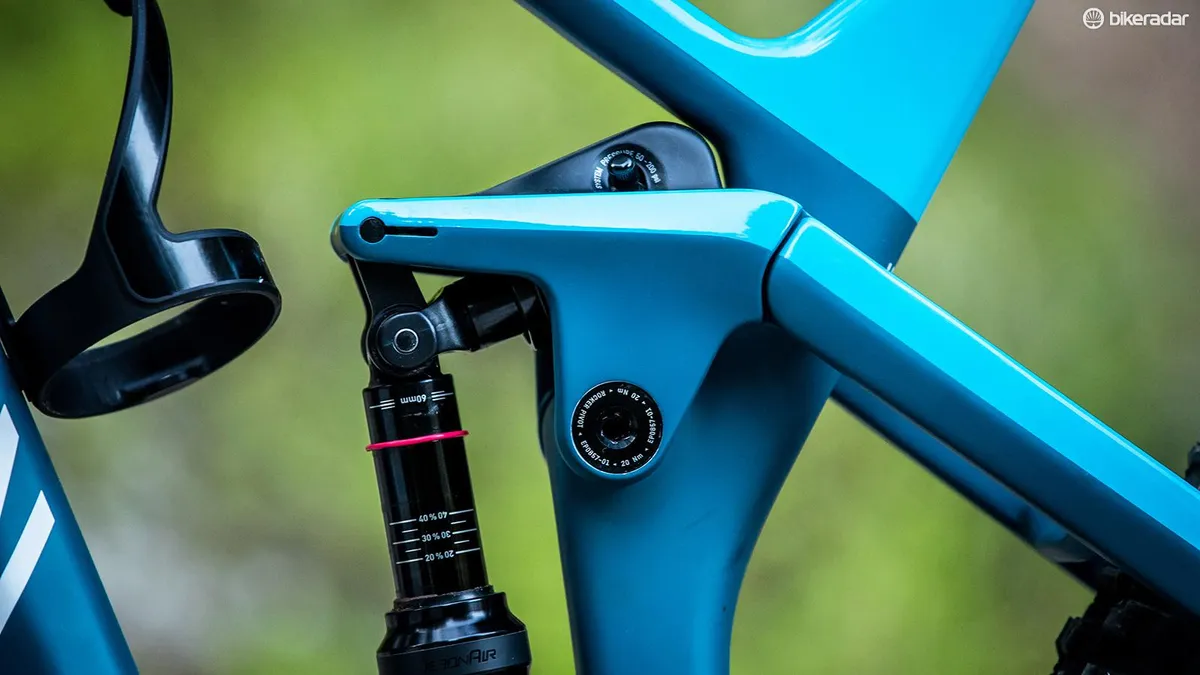
Switching between the two modes changes the bike suspension kinematics, not just the geometry (which steepens the head angle and effective seat tube by 1.5 degrees) to help the bike become a more efficient climber. Anti-squat is increased by approximately 10 percent and the leverage curve is more progressive, restricting you to 135mm of travel.
While the Shapeshifter Stage 2.0 is new, the geometry of the bike has seen a few refinements too to build it solely around 29in wheels, which Canyon believes are faster for an enduro race bike.
"For some time now, there has been a clear trend towards 29-inch wheels in enduro racing, but we weren't interested in just blindly following that trend," says Canyon's Gravity Bike Category Manager Daniel Oster.
Canyon came to this conclusion after months of testing with Canyon Factory Enduro Team pro riders Ines Thoma and Dimitri Tordo, under the guidance of team principal and former DH World Champion Fabien Barel.
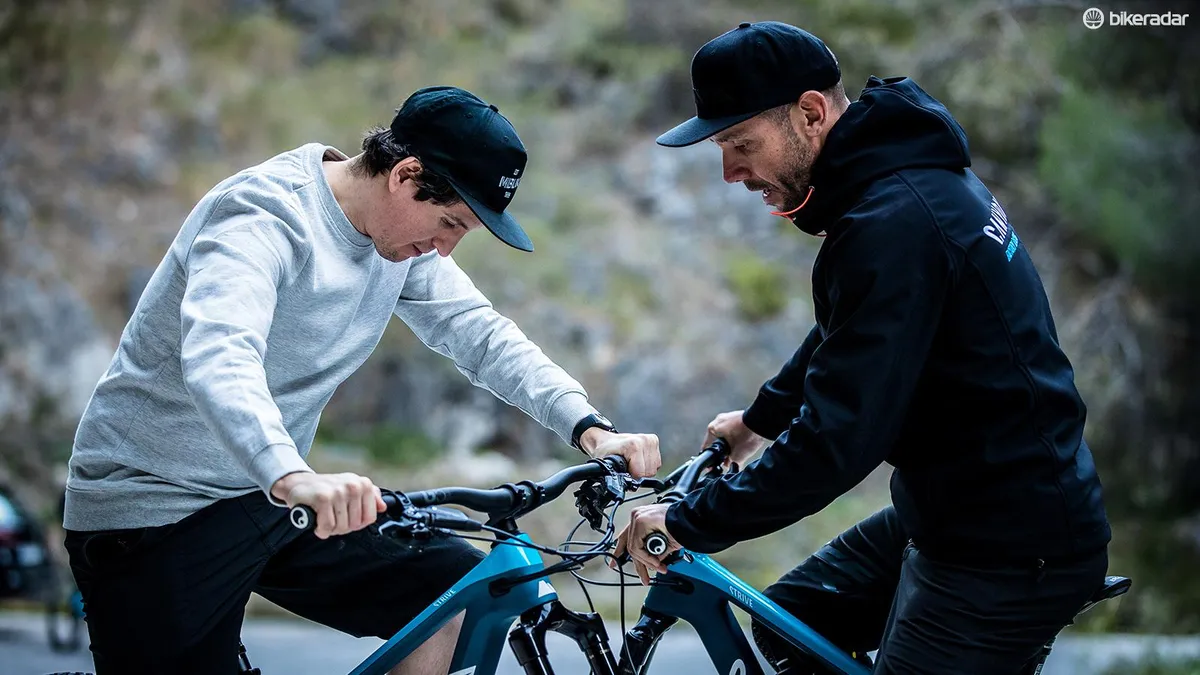
The geometry has been kept reasonably familiar to the previous bike. The head angle is 66 degrees in DH mode and 67.5 degrees in XC, with an effective seat tube angle of 73.5 degrees in DH and 75 degrees in XC, both of which are identical to the previous frame.
Canyon has introduced four sizes from small to extra-large on the new Strive to cover the five sizes previously available. It says they suit riders ranging from 1.58m / 5ft 2in to 2m / 6ft 8in tall.
This means the reach on the small and medium frames (415mm and 440mm respectively) are slightly shorter and the large and extra-large frames (470mm and 500mm respectively) are somewhat longer.
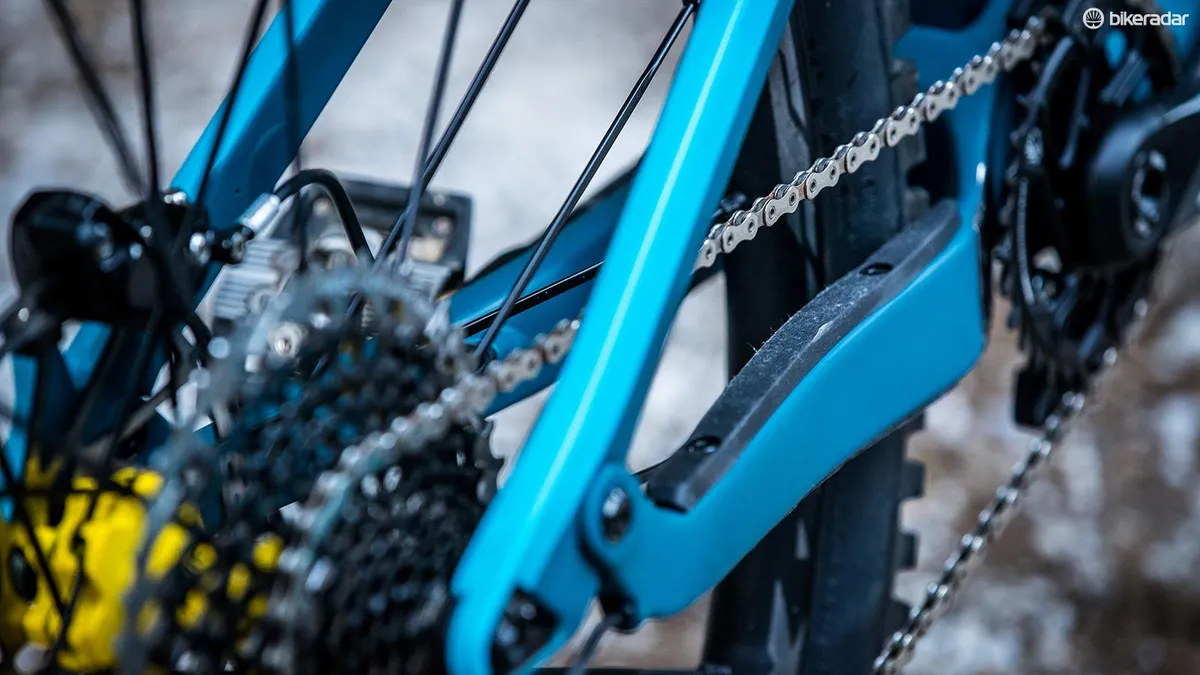
The chainstays are a short 435mm on all sizes, and one significant change to note is that the Strive now uses 150mm of rear wheel travel, which is 10mm less than the 650b bike it replaces.
There are updates to the frame construction too, with two frame options available — the CF and CFR — both of which are fully carbon. The same moulds are used for both frames, but the difference between them is the layup of the carbon fibre; the type of fibre, the way the fibres and resin are combined, and the alignment of the weave.
This results in the CFR frame weighing a claimed 300g less than the CF frame while being equally stiff.

Canyon has also kept internal cable routing on the Strive to save weight, and added integrated frame protection on the chainstays and down tube. It also uses Boost wheel spacing front and rear.
While Canyon hasn't rocked the boat in terms of the geometry numbers and rear wheel travel, the reach on larger sizes is definitely more contemporary. It's also stuck to what it believes is a very versatile design, which has bought the team two EWS overall team titles in the past.
Canyon Strive CFR 9.0 Team kit
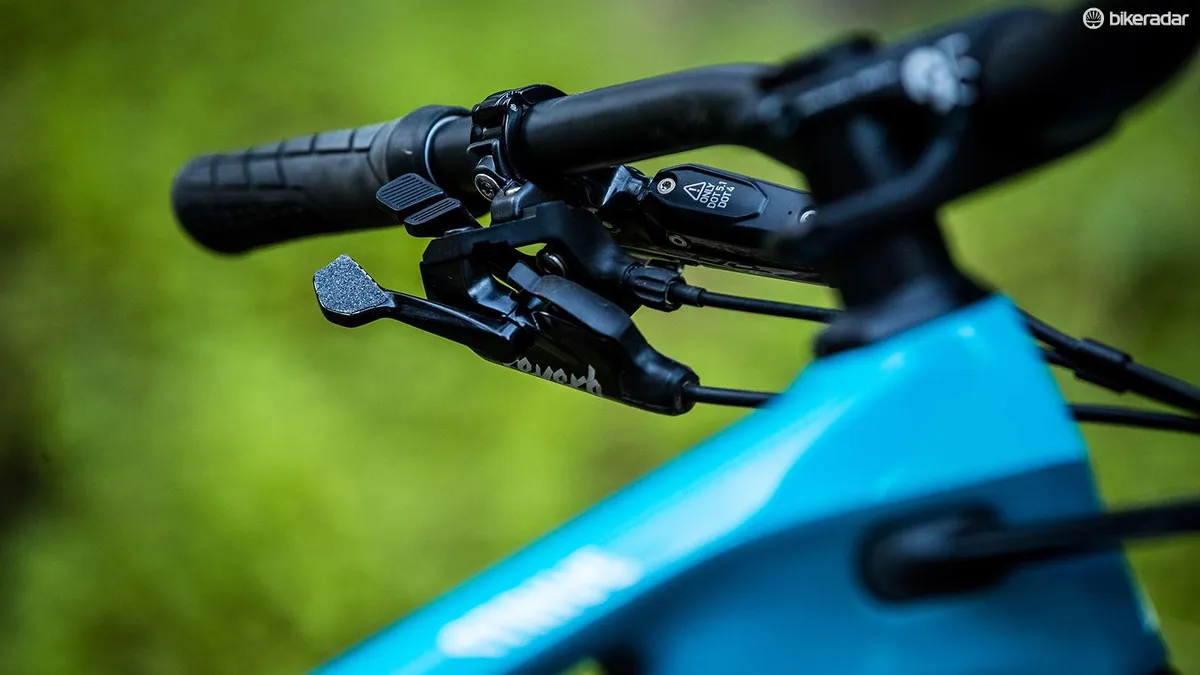
The Canyon Strive ridden here is the CFR 9.0 Team edition, which is a replica bike of the Canyon Factory Enduro Team in the team colourway. This means you get some top-end components bolted to it.
Suspension duties rely on RockShox, with a 170mm Lyrik RC2 fork up front and the Super Deluxe RCT rear shock out back.
SRAM provides its XO1 Eagle groupset, Code RSC brakes and a Reverb dropper post, which is integrated in to Canyon's Shapeshifter lever under the handlebars.

Mavic Deemax Pro wheels run on Maxxis tyres, while Canyon's own G5 bars and stem, an e*thirteen chain guide and Ergon saddle finish off the build.
The claimed weight is 14.05kg in a medium without pedals.
Canyon Strive CFR 9.0 Team ride impressions
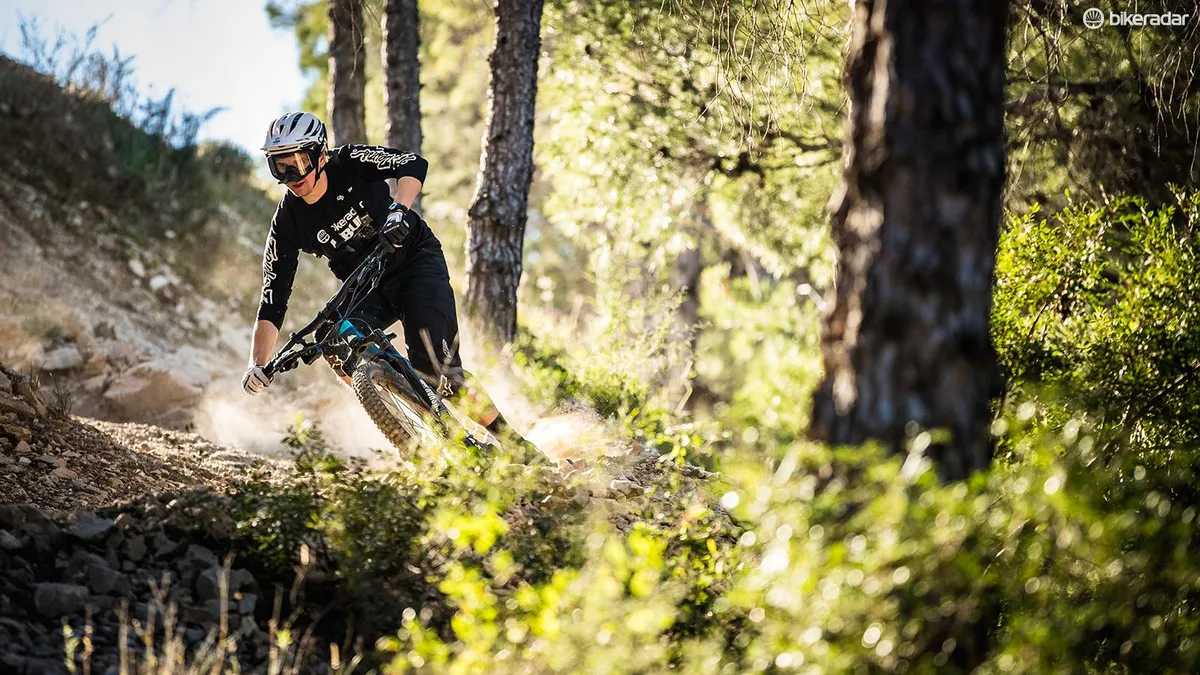
I had a one-day introduction to the new Strive on the loose and technical trails of southern Spain. It was challenging terrain to test a new bike, but definitely the sort of tracks the Strive was built to shine on. Deep dust, loose rocks and a good mix of flow and tech trails gave me a glimpse into what this bike is capable of.
First things first is how comfortable the Strive felt to sit on. Once I'd got the suspension, cockpit, tyre pressures and Shapeshifter setup correctly at the bottom of the trails, the 440mm reach on the size medium felt right for me at 173cm / 5ft 8in.
Personally, I'm not the biggest advocate of longer bikes making better bikes, so I was perfectly happy with the size, and when matched with the 435mm chainstays it felt like I had a pretty centred position on the bike.
The short 440mm seat tube means I had plenty of space to get the dropper post in the correct place too.
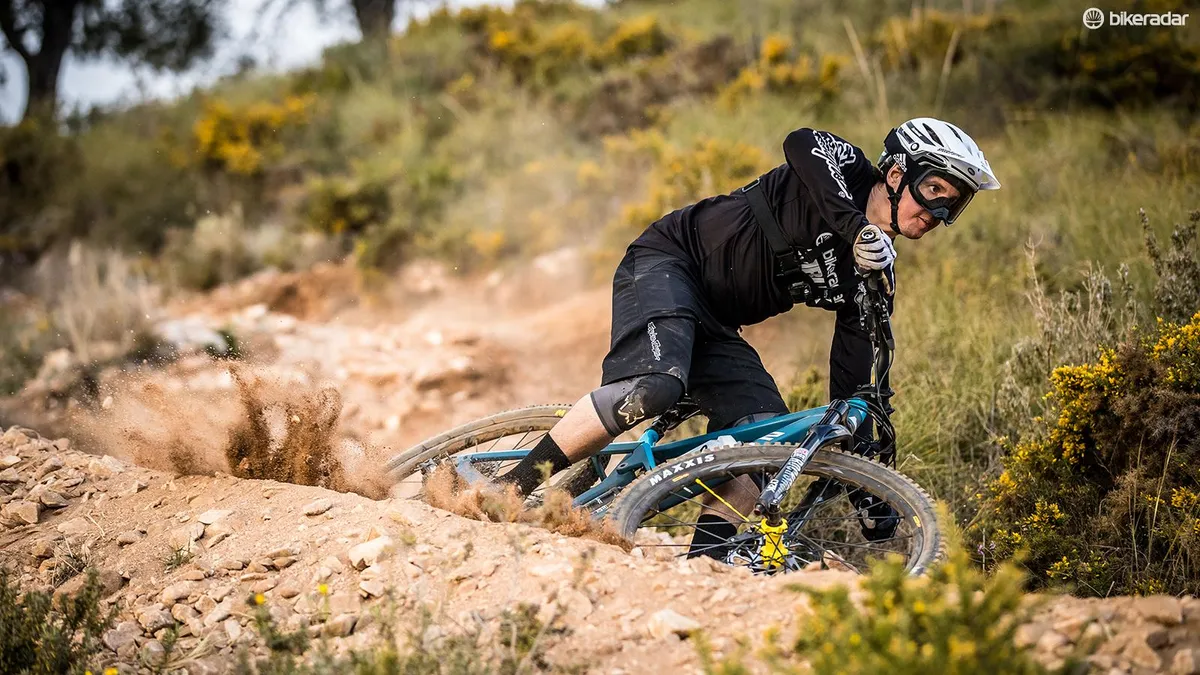
Out on the trail, the geometry in DH mode, while relatively conservative in today's market of aggressive enduro bikes, felt perfectly stable and capable of managing the terrain without becoming unsettled.
While I didn't hit any high-speed sections, I found the Strive had a fine-tuned balance between its agility to negotiate tight, awkward turns, and how well it held its composure over rough, straighter parts of the trail.
I never tackled any real technical climbs, but on the steep, loose rocks my balance was easy to maintain
The centred riding position on the medium meant it was 'relatively' easy to find grip on the extremely loose surface and moving around the bike was never a problem. I would say one of the biggest highlights of the Strive was how easy it was to jump on and feel like you've been riding the bike for years.
In the Strive's XC mode, the steeper head angle and seat tube certainly made it a more pleasant bike to climb than in DH mode, and the change in kinematics also helped with this.
I never tackled any real technical climbs, but on the steep, loose rocks my balance was easy to maintain. There was enough grip too that I didn't have to shuffle around much to find it and never felt like I was hanging off the back.
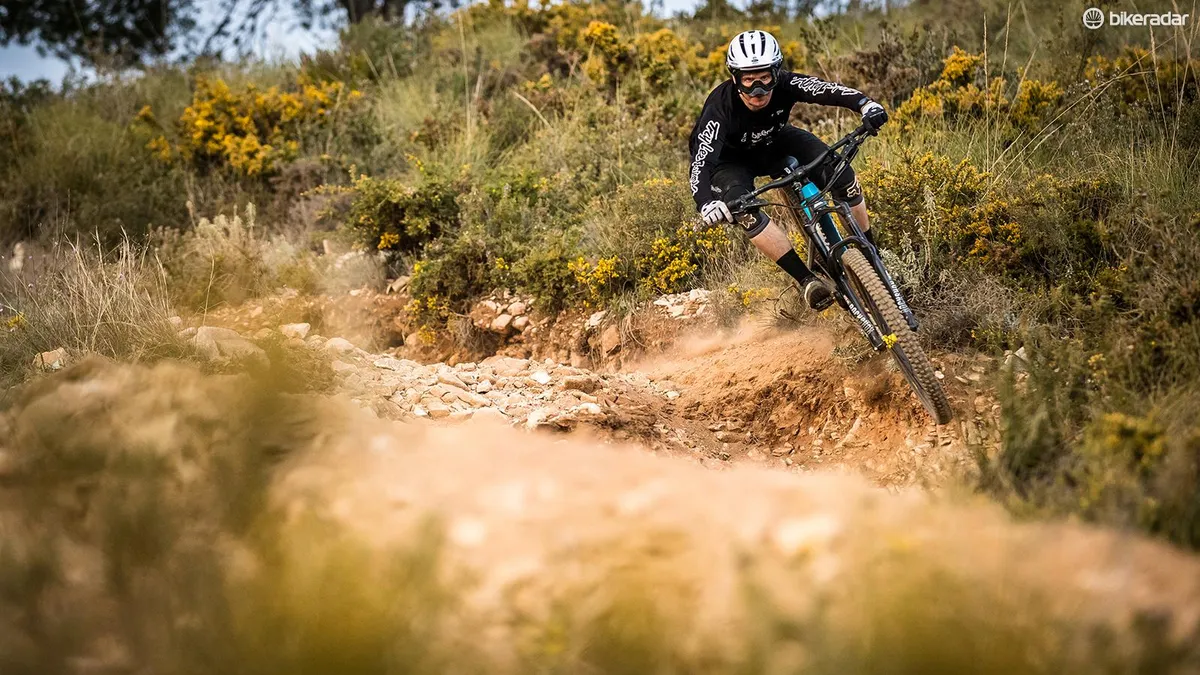
On the descents this mode does become a little twitchy and I would use it more for flowing, smooth trails, rather than rough, flat ground. The 135mm of suspension definitely feels harsher and certainly gives the rear wheel a harder time.
With the new 29in wheels, the travel has been dropped to 150mm (matched with 160mm fork on the CF models and 170mm on the CFR). Canyon has borrowed its triple phase suspension system that was developed initially for its Sender downhill bike. In simple terms, it outlines most brands' suspension designs; sensitive at the start of the travel, with mid-stroke support and a progressive end-stroke to make sure you're only using full travel when you need it.
Canyon seems to have this system pretty dialled because it feels like the Strive has more than 150mm of travel. This comes from the good mid-stroke support that helps keep the bike from blowing through to the last third of its travel.
It also helps the Strive to keep speed across rough terrain where you can pump and push the bike. It has a calm but spritely ride, and feels plusher than the Intense Tracer I was riding last year, but is not as glued to the trail as the new Scott Ransom.
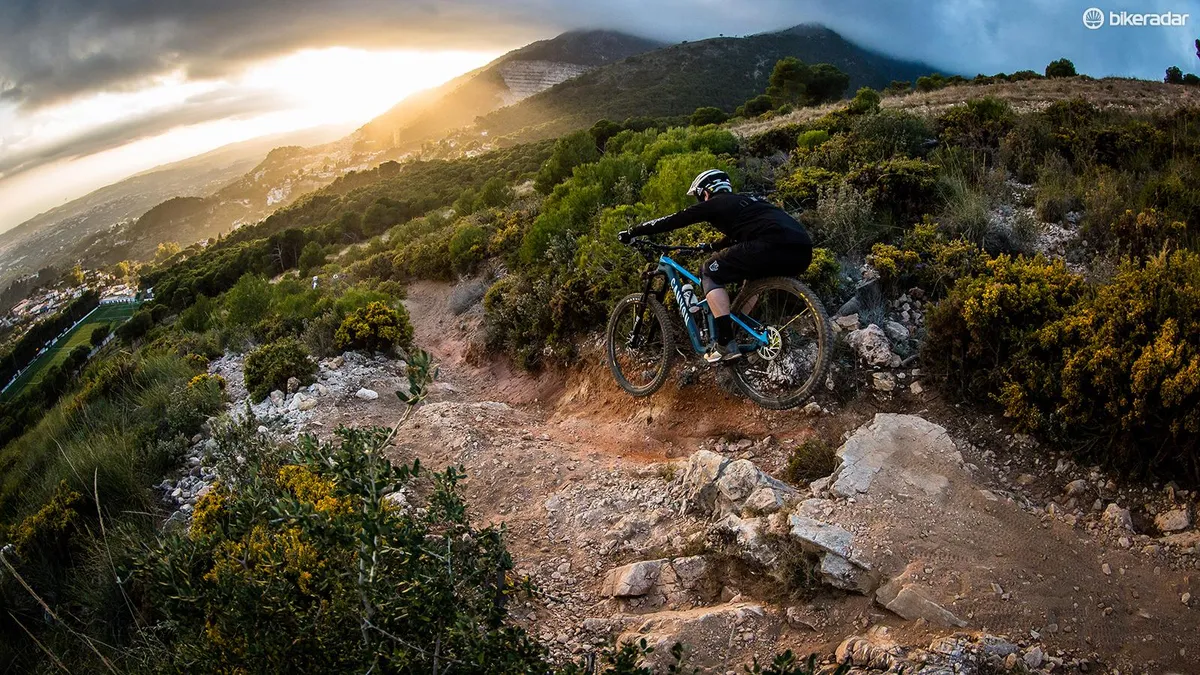
Using the new Shapeshifter Stage 2.0 out on the trail is as easy as shifting gear; depress the lever for downhill mode and let the bumps put the bike in all its trails smashing glory.
When it's time to climb back up the hill, push in the XC lever, stand up on the pedals and suddenly you're on a 135mm aggressive cross-country bike. This new system is a marked improvement over the old Shapeshifter.
I have no impressions on its reliability yet, but the service intervals are every 200 hours, which is almost double that of Fox's forks and shocks — the manufacturer of the latest Shapeshifter.
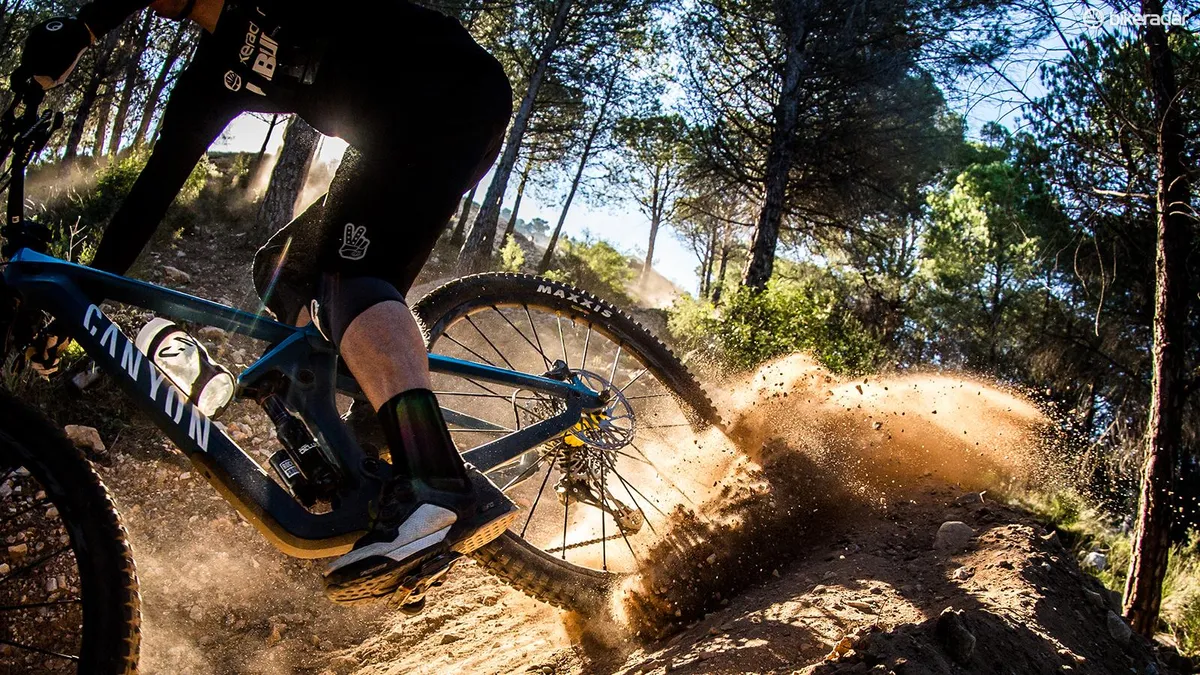
The rest of the bike performed as well as you would expect with such high-end components. The Lyrik was an excellent match to the Super Deluxe rear shock, and adding one extra volume spacer gave the support I wanted.
SRAM's XO1 Eagle and Code brakes are all proven kit, as are the Mavic wheels, and Canyon's own G5 bar and stem offered a natural shape and comfortable ride.
So, where did the bike get unstuck? Well, the EXO casing on the Maxxis tyres certainly suffered on the rocks and you could argue that running stronger tyres would benefit the type of riders looking to buy this bike.
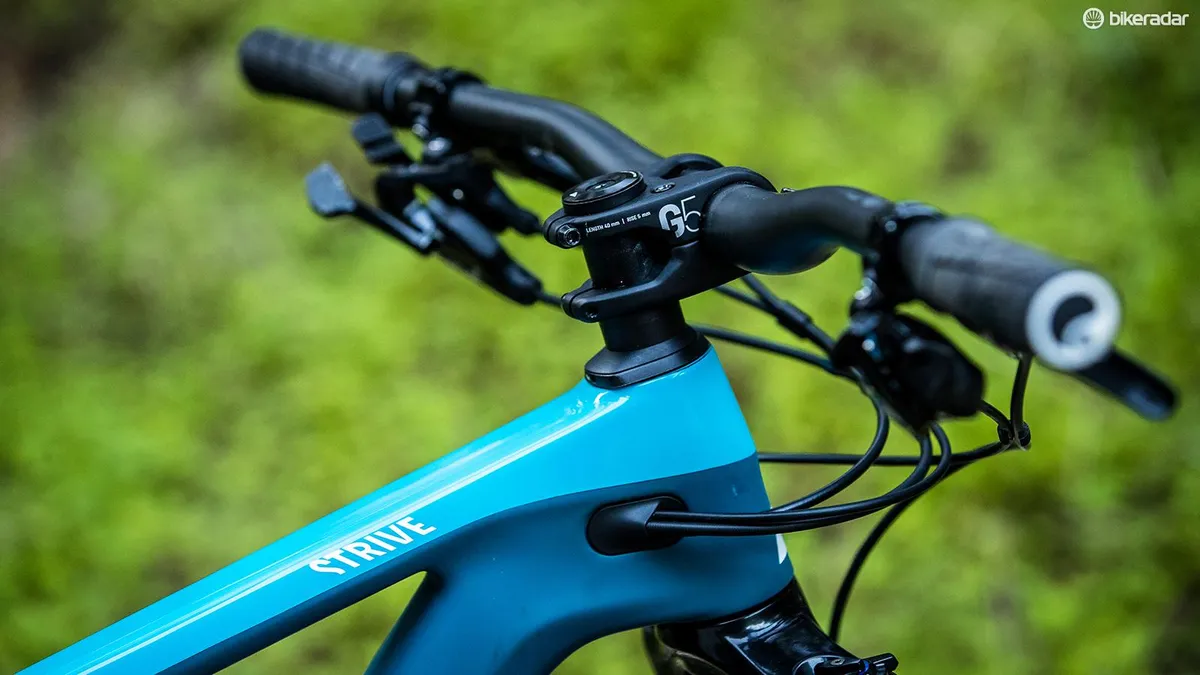
Rather than replacing the tyres, I would invest in some decent inserts and carry on. As for the rest of the bike, this one-day introduction highlighted no significant flaws.
As I mentioned previously, I never hit any really high-speed sections of trail, nor any technical singletrack climbs, and I can't comment on reliability, so there's definitely more to be said on the Strive with further testing. I would like to see longer chainstays on both the large and extra-large sizes to help keep a more centred riding position between the wheels and ride the bike in a location with more grip to really give it a hammering in the corners.
Canyon Strive CFR 9.0 Team early verdict
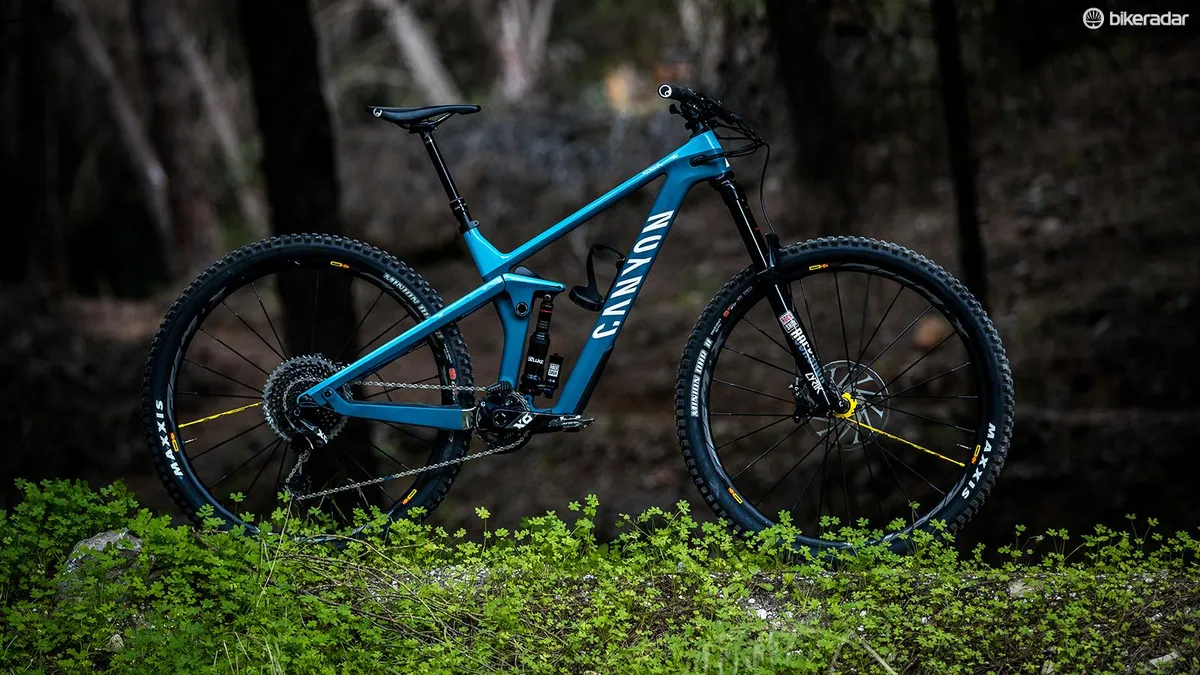
The Canyon Strive is a bike you can feel instantly at home on and finds a good balance between its geometry and suspension, which benefits the rider and lets you enjoy the ride.
The new Shapeshifter worked well and is far more convenient, plus, with this spec there is little to complain about. I believe this is a bike that can bring out the best in a lot of riders.
Canyon Strive range and pricing
- Strive CFR 9.0 Ltd: £6,349 / €6,999 / $NA / AU$10,199
- Strive CFR 9.0 Team: £4,999 / €5,499 / $6,000 / AU$7,999
- Strive CF 8.0: £4,099 / €4,499 / $5,300 / AU$6,549
- Strive CF 7.0: £3,649 / €3,999 / $NA / AU$5,799
- Strive CF 6.0: £3,199 / €3,499 / $3,999 / AU$5,099
- Strive CF 5.0: £2,699 / €2,999 / $NA / AU$4,349

